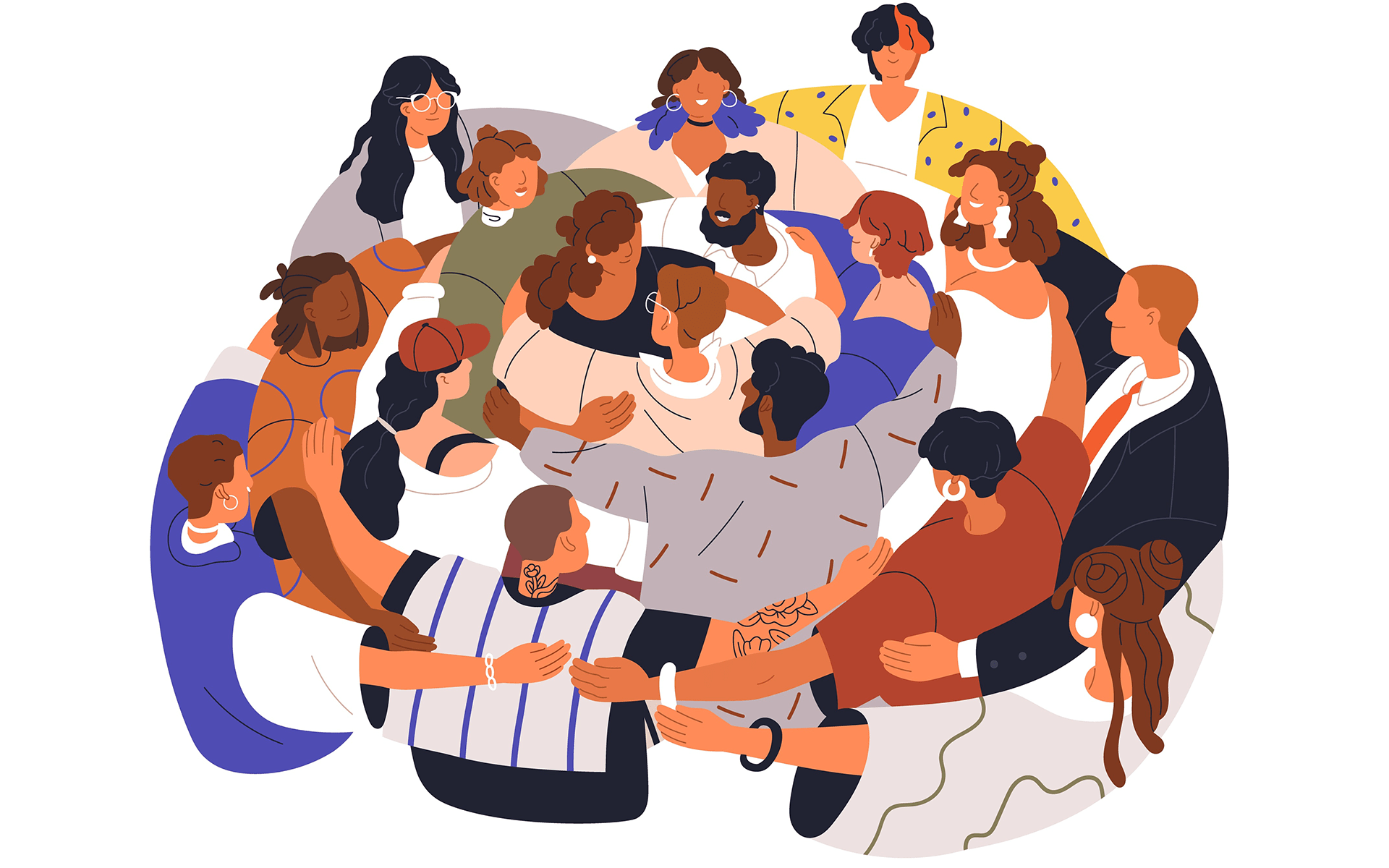One of the most disturbing aspects of contemporary US culture is the degree to which self-hatred runs rampant. Nearly everyone I encounter expresses some amount of personal dissatisfaction and harbors a ruthless critic within who compares them to others and judges everyone they meet. I even once read an interview with Meryl Streep in which she confessed to believing she couldn’t act! Unfortunately, most people have been conditioned by cultural norms, family, media, and a host of other influences to feel inadequate and unworthy.
Learning to be less susceptible to these negative voices and cultivating loving-kindness for yourself does not mean ignoring the wisdom that comes from seeing yourself clearly.
Keep in mind that sometimes your thoughts tell you important and useful information about yourself. For instance, you might think, Hmmm, I really should get out and exercise. That kind of voice is not the problem. Usually, however, there are other, negative voices attaching a huge amount of judgment to such thoughts—I’m lazy, I’m ugly, I’m bad, and so on. Learning to be less susceptible to these negative voices and cultivating loving-kindness for yourself does not mean ignoring the wisdom that comes from seeing yourself clearly.
What is Loving-Kindness?
Loving-kindness is truly not that hard to experience. Contrary to what you might think, it is not a mystical quality reserved for sages and saints. Loving-kindness spontaneously arises in many of us quite frequently throughout our lives.
Right now, bring to mind someone you love—someone with whom you don’t have a very complicated relationship. (Your ex-partner is not the best choice for this exercise.) If you cannot think of someone, think of your favorite pet—a dog, cat, or other animal. Babies also work well for this exercise. As you imagine, sense, or feel this being in front of you, check into your body and notice what you are feeling. When I offer this exercise, people tend to report a warm feeling in their chests, a smile on their lips, some relaxation, and perhaps an expansive quality in the body. What are you feeling?
The feeling that arises doing this exercise is exactly what I have been referring to as loving-kindness: the natural wish for another to be happy. The feeling may be accompanied by thoughts and a set of bodily sensations. But when you feel it, you recognize it. Further, you can cultivate, deepen, and expand this lovely quality that arises in your mind.
So first learn to acknowledge the goodness that is already present. Second, learn to deliberately cultivate it more and more, so that it can increase within your heart and mind. Third, let it become who you are (even if that’s still down the road a bit).
Step One: Recognizing Loving-Kindness
Once you become conscious of loving-kindness, you can recognize when it is present in your life, which may be more frequently than you would expect. I have noticed how often people tend to not notice their generous or kind feelings. I believe it is important to take a moment to acknowledge when we have kind thoughts, say kind words, or engage in kind actions. It is valuable to see that you already have feelings of loving-kindness and to appreciate yourself for your innate capacity to love and experience compassion. The more you recognize this capacity, the more it will grow and eventually become a state of mind to which you return.
I believe it is important to take a moment to acknowledge when we have kind thoughts, say kind words, or engage in kind actions.
Those who tend toward depression or self-criticism are especially likely to ignore or miss their own kind, loving, and generous moments. The more you are able to acknowledge their daily occurrence, the more evidence you accumulate that your innate loving-kindness is the antidote to the part of you that feels sad, hopeless, or inadequate. Perhaps for a day, just count the number of times you feel compassion, empathy, love, or kindness for another being, whether that being is a plant, an animal, a human, or yourself, regardless of whether or not you act on such feelings.
Step Two: Practice Loving-Kindness
Ultimately, as we practice over time, loving-kindness tends to become more and more who we are. You will likely find yourself naturally being kinder, more forgiving, and less judgmental to others as well as to yourself.
You might notice words or feelings of loving-kindness spontaneously appearing in your mind. You might notice yourself reacting with kindness in situations where previously you would have reacted with fear or contempt. When this shift happens—over a period of time that differs from person to person—it is startling. When you begin to touch it, however, you know you are touching your deepest capacity for love, present within you all the time.
A Loving-Kindness Practice to Connect With Compassion
- To begin this practice, let yourself be in a relaxed and comfortable position.
- Bring to mind someone who makes you feel happy the moment you think of them—a relative, a close friend, someone with whom you don’t have too complicated a relationship. You can pick a child, or you can always choose a pet, a dog or a cat or any creature that is fairly easy to feel love for. Let this person (or animal) come to mind—if you can, have a sense of this person being in front of you, to be felt, or sensed, or seen.
- As you imagine this, notice how you are feeling inside. Maybe you feel bodily warmth, some heat in your face, or a smile, or a sense of expansiveness. This is loving-kindness, a natural feeling that is accessible to anyone at any moment.
- While imagining your loved one in front of you, begin to wish this person well: May you be safe and protected from danger. May you be happy and peaceful. May you be healthy and strong. May you have ease and well-being…
- You can use my words or your own words to say what feels meaningful to you. As you say these words, have a sense of letting this loving-kindness come from you and begin to touch your loved one. You might think in images, you might have a sense of color or light, you might just have a feeling. The words may continue to bring on more of this feeling, and I encourage you to say whatever feels meaningful to you…May you be free from stress and anxiety. May you be free from all fear.
- As you are sending out these words and these feelings of loving-kindness, also check into yourself and see how you’re feeling inside.
- Now imagine that your loved one turns around and begins to send loving-kindness back to you. Try to receive this loving-kindness as your loved one wishes you well and says: May you be happy. May you be peaceful and at ease. May you be safe and protected from all danger. May you have joy and well-being. Let yourself take it in. If you felt nothing earlier in the meditation and are still not feeling anything at this point, that is not a problem. This is a practice that plants seeds.
- And if you are feeling something other than loving-kindness, just check into that. What is it you are feeling? There may be something to learn here. You can say, May I hold this too (whatever you’re feeling) with loving-kindness.
- Now try to send loving-kindness to yourself. You can imagine it radiating throughout your body from your heart. Or you can just have a sense of it: May I be safe and protected from danger. May I be healthy and strong. May I be happy and peaceful. May I accept myself just as I am. You can ask yourself: What do I need to be happy? See what arises and offer that to yourself. May I have meaningful work. May I have a joyful life. May I have close friends and family…Now check into yourself and notice what you feel as you do this.
- Let yourself bring to mind one person or a group of people to whom you wish to send loving-kindness. Imagine them in front of you—sense them, see them, feel them…May you be happy and peaceful. May you be free from all stress and anxiety, fear, worry, or grief. May you have joy and happiness, well-being.
- Let this loving-kindness expand, spreading out and touching anyone you want to touch right now. Let it go in all directions, toward people you know, toward people you don’t know, toward people you have difficulty with, toward people you love. Imagine expansive and pervasive loving-kindness, touching and changing every person and every animal…May everyone everywhere be happy and peaceful and at ease. May we all experience great joy.
You can do this practice daily, weekly, or as you feel so inclined. You may wish to do it for several weeks or on an ongoing basis. You can also do loving-kindness practice in combination with your mindfulness practice, either beginning or ending the sittings with loving-kindness. In that case, just do loving-kindness for a few minutes. The full meditation could take up to ten minutes.
Excerpted from FULLY PRESENT: The Science, Art, and Practice of Mindfulness by Susan L. Smalley, PhD and Diana Winston. Copyright © 2022. Available from Hachette Go, an imprint of Hachette Book Group, Inc.
read more
Try This Self-Guided Meditation Retreat for Rest and Restoration
May this curated retreat offer some relief, to collectively nourish our awareness, so that we have the opportunity to build authentic, trusting relationships, and from there, work together to create a kinder world.
Read More
How to Hold Boundaries with Skill and Care
Setting and holding boundaries can be challenging, even if you’re not a people-pleaser. The key is communicating clearly to cut down on conflict and increase freedom—for those on both sides of the line.
Read More
A 15-Minute Meditation to Cultivate Equanimity
Diana Winston leads a guided practice to find even-mindedness and balance in uncertain times.
Read More









